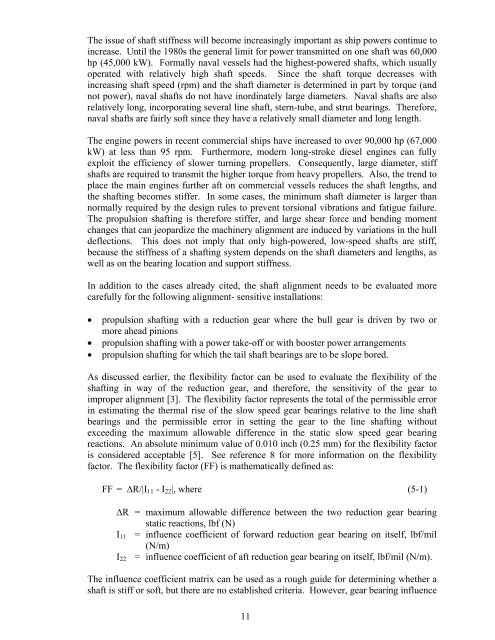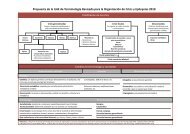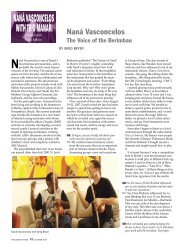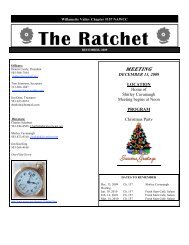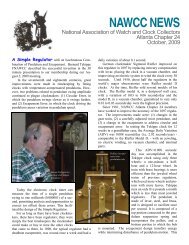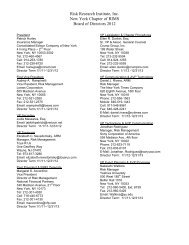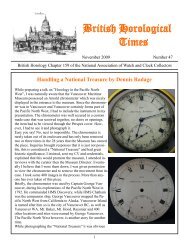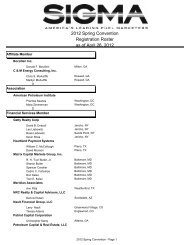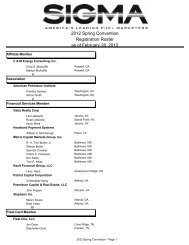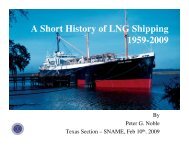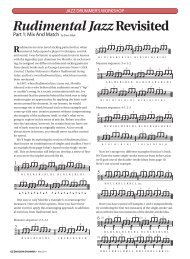Technical and Research Bulletin 3-51 - Amazon Web Services
Technical and Research Bulletin 3-51 - Amazon Web Services
Technical and Research Bulletin 3-51 - Amazon Web Services
You also want an ePaper? Increase the reach of your titles
YUMPU automatically turns print PDFs into web optimized ePapers that Google loves.
The issue of shaft stiffness will become increasingly important as ship powers continue to<br />
increase. Until the 1980s the general limit for power transmitted on one shaft was 60,000<br />
hp (45,000 kW). Formally naval vessels had the highest-powered shafts, which usually<br />
operated with relatively high shaft speeds. Since the shaft torque decreases with<br />
increasing shaft speed (rpm) <strong>and</strong> the shaft diameter is determined in part by torque (<strong>and</strong><br />
not power), naval shafts do not have inordinately large diameters. Naval shafts are also<br />
relatively long, incorporating several line shaft, stern-tube, <strong>and</strong> strut bearings. Therefore,<br />
naval shafts are fairly soft since they have a relatively small diameter <strong>and</strong> long length.<br />
The engine powers in recent commercial ships have increased to over 90,000 hp (67,000<br />
kW) at less than 95 rpm. Furthermore, modern long-stroke diesel engines can fully<br />
exploit the efficiency of slower turning propellers. Consequently, large diameter, stiff<br />
shafts are required to transmit the higher torque from heavy propellers. Also, the trend to<br />
place the main engines further aft on commercial vessels reduces the shaft lengths, <strong>and</strong><br />
the shafting becomes stiffer. In some cases, the minimum shaft diameter is larger than<br />
normally required by the design rules to prevent torsional vibrations <strong>and</strong> fatigue failure.<br />
The propulsion shafting is therefore stiffer, <strong>and</strong> large shear force <strong>and</strong> bending moment<br />
changes that can jeopardize the machinery alignment are induced by variations in the hull<br />
deflections. This does not imply that only high-powered, low-speed shafts are stiff,<br />
because the stiffness of a shafting system depends on the shaft diameters <strong>and</strong> lengths, as<br />
well as on the bearing location <strong>and</strong> support stiffness.<br />
In addition to the cases already cited, the shaft alignment needs to be evaluated more<br />
carefully for the following alignment- sensitive installations:<br />
• propulsion shafting with a reduction gear where the bull gear is driven by two or<br />
more ahead pinions<br />
• propulsion shafting with a power take-off or with booster power arrangements<br />
• propulsion shafting for which the tail shaft bearings are to be slope bored.<br />
As discussed earlier, the flexibility factor can be used to evaluate the flexibility of the<br />
shafting in way of the reduction gear, <strong>and</strong> therefore, the sensitivity of the gear to<br />
improper alignment [3]. The flexibility factor represents the total of the permissible error<br />
in estimating the thermal rise of the slow speed gear bearings relative to the line shaft<br />
bearings <strong>and</strong> the permissible error in setting the gear to the line shafting without<br />
exceeding the maximum allowable difference in the static slow speed gear bearing<br />
reactions. An absolute minimum value of 0.010 inch (0.25 mm) for the flexibility factor<br />
is considered acceptable [5]. See reference 8 for more information on the flexibility<br />
factor. The flexibility factor (FF) is mathematically defined as:<br />
FF = ∆R/|I11 - I22|, where (5-1)<br />
∆R = maximum allowable difference between the two reduction gear bearing<br />
static reactions, lbf (N)<br />
I11 = influence coefficient of forward reduction gear bearing on itself, lbf/mil<br />
(N/m)<br />
I22 = influence coefficient of aft reduction gear bearing on itself, lbf/mil (N/m).<br />
The influence coefficient matrix can be used as a rough guide for determining whether a<br />
shaft is stiff or soft, but there are no established criteria. However, gear bearing influence<br />
11


